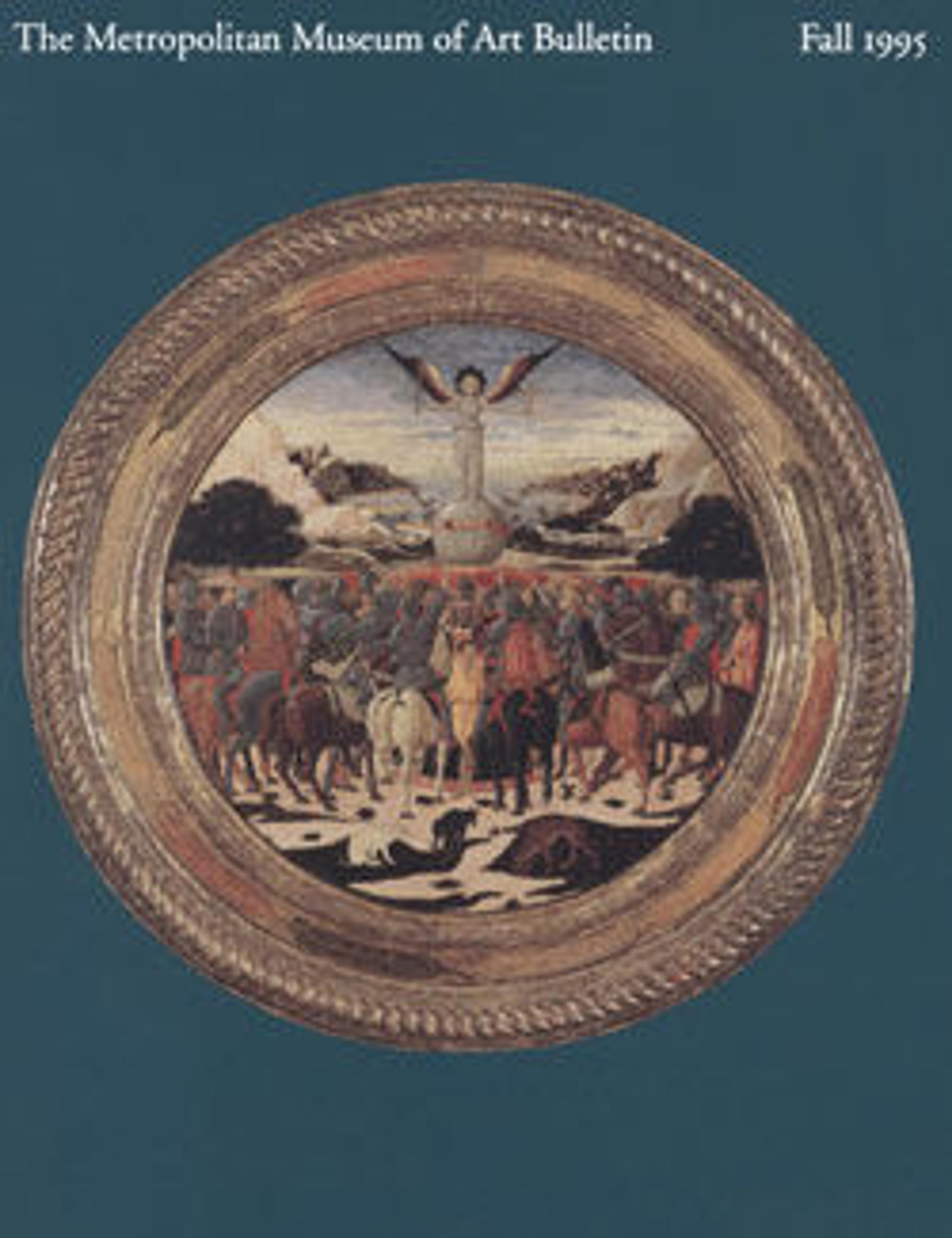Fragment of a Royal Head, Probably Apries
Although in fragmentary condition, this piece is a royal image of the highest artistic quality. The sculptor, a master of working hard stones, differentiated with superb sensitivity the various surfaces of the bulging metal helmet, the leather of the strips or cap that the king wore under the helmet, and the fleshy facial features. Surviving images of Dynasty 26 kings are rare, generally small, and often fragmentary.
This over-lifesize fragment probably came from a seated statue of the energetic pharaoh, Apries. Kings of Dynasty 26 were constantly involved in conflicts with surrounding kingdoms, particularly those northeast of Egypt. Despite some successes, a foreign defeat combined with growing internal tensions led to Apries' overthrow by the usurper, Amasis, after nineteen years on the throne; what remains of this image of Apries may be the result of willful destruction.
This over-lifesize fragment probably came from a seated statue of the energetic pharaoh, Apries. Kings of Dynasty 26 were constantly involved in conflicts with surrounding kingdoms, particularly those northeast of Egypt. Despite some successes, a foreign defeat combined with growing internal tensions led to Apries' overthrow by the usurper, Amasis, after nineteen years on the throne; what remains of this image of Apries may be the result of willful destruction.
Artwork Details
- Title: Fragment of a Royal Head, Probably Apries
- Period: Late Period, Saite
- Dynasty: Dynasty 26
- Reign: reign of Apries
- Date: 589–570 B.C.
- Geography: From Egypt
- Medium: Black diorite
- Dimensions: H. 30 × W. 21.3 × D. 12.9 cm, 9.6 kg (11 13/16 × 8 3/8 × 5 1/16 in., 21.2 lb.)
- Credit Line: Purchase, Lila Acheson Wallace Gift, 1994
- Object Number: 1994.198
- Curatorial Department: Egyptian Art
More Artwork
Research Resources
The Met provides unparalleled resources for research and welcomes an international community of students and scholars. The Met's Open Access API is where creators and researchers can connect to the The Met collection. Open Access data and public domain images are available for unrestricted commercial and noncommercial use without permission or fee.
To request images under copyright and other restrictions, please use this Image Request form.
Feedback
We continue to research and examine historical and cultural context for objects in The Met collection. If you have comments or questions about this object record, please complete and submit this form. The Museum looks forward to receiving your comments.
